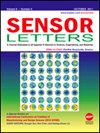利用非平衡格林函数评价基于硅-过渡金属二硫化物异质结构的陡坡场效应晶体管的性能
引用次数: 0
摘要
随着技术进入纳米级,金属氧化物半导体场效应晶体管的性能受到短沟道效应的严重影响。现有的仿真工具大多未将短信道效应和量子效应纳入分析,使其真实性受到质疑。尽管研究人员已经尝试提供隧道场效应晶体管、无结晶体管等形式的替代方案,但它们都有自己的一套问题。因此,金属氧化物半导体场效应晶体管仍然是VLSI产业的支柱。本文致力于新型管状金属氧化物半导体场效应晶体管的设计与研究。在仿真中,采用非平衡格林函数作为主要仿真模型。分析了该器件在功函数、介电常数和界面陷阱电荷等不同物理变化下的性能。本研究采用硅-钼-二硫化异质结和硅-钨-二硫化异质结作为通道材料。比较了两种异质结的结果。分析表明,与传统的金属氧化物半导体场效应晶体管相比,二硫化钼硅异质结具有更好的线性度,二硫化钨硅异质结具有更好的开关速度。本文章由计算机程序翻译,如有差异,请以英文原文为准。
Performance Evaluation of Silicon-Transition Metal Dichalcogenides Heterostructure Based Steep Subthreshold Slope-Field Effect Transistor Using Non-Equilibrium Green’s Function
With technology invading nanometer regime performance of the Metal-Oxide-semiconductor Field Effect Transistor is largely hampered by short channel effects. Most of the simulation tools available do not include short channel effects and quantum effects in the analysis which raises doubt
on their authenticity. Although researchers have tried to provide an alternative in the form of tunnel field-effect transistors, junction-less transistors, etc. but they all suffer from their own set of problems. Therefore, Metal-Oxide-Semiconductor Field-Effect Transistor remains the backbone
of the VLSI industry. This work is dedicated to the design and study of the novel tub-type Metal-Oxide-Semiconductor Field-Effect Transistor. For simulation Non-Equilibrium Green’s Function is used as the primary model of simulation. The device is analyzed under different physical variations
like work function, permittivity, and interface trap charge. This work uses Silicon-Molybdenum Disulphide heterojunction and Silicon-Tungsten Disulphide heterojunction as channel material. Results for both the heterojunctions are compared. It was analyzed that Silicon-Molybdenum Disulphide
heterojunction provides better linearity and Silicon-Tungsten Disulphide heterojunction provides better switching speed than conventional Metal-Oxide-Semiconductor Field-Effect Transistor.
求助全文
通过发布文献求助,成功后即可免费获取论文全文。
去求助
来源期刊

Sensor Letters
工程技术-电化学
自引率
0.00%
发文量
0
审稿时长
6 months
期刊介绍:
The growing interest and activity in the field of sensor technologies requires a forum for rapid dissemination of important results: Sensor Letters is that forum. Sensor Letters offers scientists, engineers and medical experts timely, peer-reviewed research on sensor science and technology of the highest quality. Sensor Letters publish original rapid communications, full papers and timely state-of-the-art reviews encompassing the fundamental and applied research on sensor science and technology in all fields of science, engineering, and medicine. Highest priority will be given to short communications reporting important new scientific and technological findings.
 求助内容:
求助内容: 应助结果提醒方式:
应助结果提醒方式:


